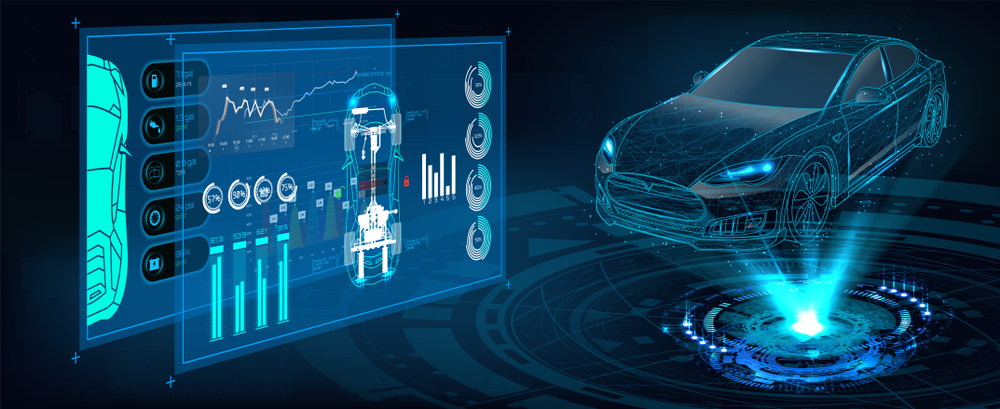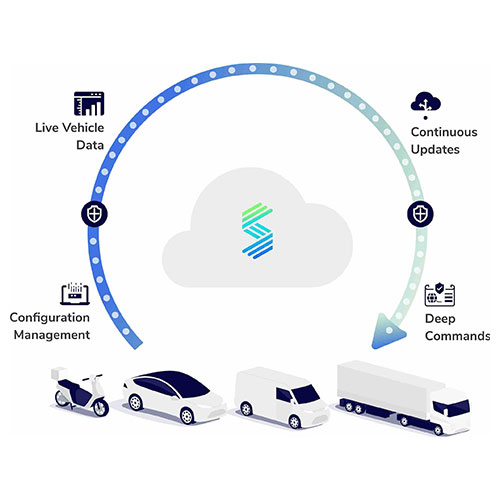Revolutionizing Mobility - Navigating the Future with Software-Defined Vehicles
SOFTWARE-DEFINED VEHICLES
The term “Software-Defined Vehicle” refers to a type of vehicle whose features and operations are mostly made possible by software. This ongoing transition of the automobile from a primarily hardware-based product to a software-centric electronic gadget on wheels is what has led to the term. Today’s high-end vehicles can already have up to 100 electronic control units (ECUs), 150 million lines of software, and an expanding number of sensors and electronic gadgets. Vehicles for the mass market are not far behind. Customers’ expectations are changing as a result of three strong trends: electrification, automation, and connection, which are pushing manufacturers to use software more and more to meet those demands.
Benefits of Software-Defined Vehicle:
Software-Defined Vehicles refer to the situation in which a car’s amount and value of software (including its electronic hardware) exceeds that of its mechanical hardware. It also reflects how cars have gradually evolved from being primarily electromechanical terminals to intelligent electronic terminals that can be continuously upgraded. Vehicles are pre-embedded with cutting-edge hardware before standard operating procedures (SOP) in order to become such intelligent terminals; the functionalities and value of the hardware will be gradually activated and increased via the OTA systems throughout the life cycle.


Today, software updates for telematics, entertainment, or diagnostic systems in vehicles necessitate a trip to the shop. Customers will have access to over-the-air (OTA) upgrades for software-defined vehicles that cover security fixes, infotainment enhancements, as well as monitoring and tuning of the car’s basic functional capabilities, such as the powertrain and vehicle dynamics. ECUs will transmit and receive enormous volumes of data to and from sensors, actuators, and other devices, providing automakers knowledge of every component of a car, as well as its performance and position in the connected ecosystem. Because of this, automakers have the chance to enhance life-cycle management and create features that will bring in money for them, all of which will lead to closer, more intimate interactions with customers.
Driving Forces of Software-Defined Vehicles
- The first necessity for industry growth is software and algorithms, which are essential for the creation of connected and autonomous automotive technologies.
- Consumers want the same behaviors and experiences from cars as they do from smartphones, according to research.
- Thirdly, increased added value for software is made possible by value chain transfer and rapid hardware commercialization.</li
Gap between the Present and the Future
The electrical and electronic architecture has shown limitations in computer power, flaws in the effectiveness of communication, and uncontrollable costs of wiring harnesses. There are several drawbacks to the conventional waterfall software development paradigm. Automobile R&D will switch from the conventional waterfall development model to the agile development model in the context of software-defined cars as a result of the aforementioned changes in technology architecture.
Organizational structure and talent supply are major shortcomings of software-oriented automotive transformation. OEMs’ organizational structure will be fundamentally reshaped: from a function-oriented structure to a platform development structure. Obstacles from the supply chain system. The connection between vehicle and parts enterprises changes from a tower-shaped vertical relationship to an annular flat relationship.
Benefits of the Software-Defined Vehicle
In the future, drivers will be able to individually activate new functions as needed. Examples include transient features, services, or applications. Therefore, software upgrades enable business and pricing structures where new features are offered as a service, either as a subscription or a standalone purchase. The car is capable of exchanging information with its surroundings, gathering data while in use, and uploading it to the cloud. Through the use of over-the-air updates, features and services may be continuously improved and re-uploaded to the car.
Software enables trends like e-mobility, automated driving, and mobility services. Drivers anticipate that new functions for their cars will always be available, much like with smartphones. This difficulty offers chances as well: The value of the vehicle can be improved and maintained throughout the course of its whole life with routine updates.

Summary
Software Defined Vehicles with their networking capabilities, offer over-the-air updates, allowing software and firmware updates to be remotely supplied to the vehicle. With this technology, drivers may save time and effort by maximizing their vehicles without going to a dealership or service center by receiving instantaneous safety improvements, bug fixes, and new features.
